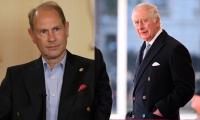Part - I
Khyber mail
“How can I lend the mullah my ear and forget the lark and the bulbul?”
— Ghani Khan
This irreverent comment is an apt description of a time long since gone in Pakistan’s Pakhtun belt – a time when religious and religio-political parties were seen as political and social inferiors.
This three-part series will look at the history of the Pakhtun relationship with the mullah, and its complex relationship with the Deoband. It will look at how the new Pakistani state, in a desire to create a new identity, formed alliances with the weaker JUI and its affiliates. This alliance ended up transforming Pakhtun society forever.
For centuries, the Pakhtuns’ most famed cultural trait was their code of chivalry. The code, ‘Pakhtunwali’, had some key attributes and several main domains. The attributes are derived from the word Pashtun itself, said to originate from the letters pey for pat, which means honour, sheen which means doing good to others or the needy, tey for toora, which literally means sword and bravery, waw for wafa, which means loyalty, noon for nang which means honour. The main domains are: nang or honour, sharam (shame), peghore (taunt), melmastia (hospitality), nanawati (sanctuary for an enemy) and badal (revenge).
While religiosity was not included in this code, it was seen by some scholars as interchangeable with religion, while others felt the two quite separate. This code was associated with a class system led by tribal leaders whose power depended on wealth but was relatively egalitarian. While not empowering for women by any modern definition, it did provide women a level of protection that allowed them to work in certain areas unhindered. Along with this was a rich culture of literature, poetry and dance in the form of the Attan.
In terms of social hierarchy, the mullah was considered lower down the class system. They were often the source of ridicule or contempt in Pashto poetry and literature, although people’s emotions could be influenced and at times erupt in outbursts of religious fervour. The austereness of the Deobandi sect had some appeal for the Sunni Pakhtuns but at the same time they remained fascinated with religious mysticism.
Although the mullah was often termed the social inferior in general talk, this class-based dislike did not mean the religious leader could always be controlled. So for every Pir Roshan and Khushal Khan Khattak, there was the initial appeal of Syed Ahmad Barelvi and the ‘Mad Faqir’ or Sartor Faqir of Malakand. In these brief episodes, charismatic men broke through the traditional religious and class hierarchy to rally people to fight and die for their cause against an external threat. The threat could range from fellow Mughals, the Safavid Persians, Sikhs and eventually the British. These rallying events would revive the regional order before events would return to the old routine.
Following Partition, the Pakhtuns of the new state were in a unique situation. They were the only ethnic group in the new country to be divided into three clear parts. The main part was in the North-West Frontier Province (NWFP), the other in Balochistan and the third in Fata, cut off from the rest of the country and ruled by the Frontier Crimes Regulations.
Around this time and the beginning of electoral politics in 1936, the dominant politics of Khyber Pakhtunkhwa (which was then NWFP) and Pakhtun areas of Balochistan and the tribal areas by the early 1940s was driven by the reformist ethnic nationalism of the Khudai Khidmatgar and the Anjuman-e-Watan, in competition against the weaker conservative local elite represented by landlords and tribal leaders.
Modern-day JUI was a pre-Partition party that broke away from its parent, the JUH, in 1946. The party’s origins start with its return to the orthodoxy message attributed to Shah Waliullah and his successors. It provided a platform for opposition to the British Raj and was also closely affiliated with the Congress and its non-violence movements against the British. They had allied with the Congress in the 1946 provincial elections. This victory proved short-lived as it was followed by the 1947 referendum. The Muslim League had traditionally struggled in this region and so tailored its religious appeals through people like the Pir of Manki Sharif.
In its first fifteen years, the new ideological state of Pakistan looked at the few opposition parties through the ideological prism of their lack of support for the idea of Pakistan. So both the Congress successors and the JUI leadership were considered suspect. But by the 1960s, with the economic boom of that era, the state started to give space to Mufti Mahmud and his compatriots in exchange for support. This was reflected in Mufti Mahmud’s decision not to support the candidacy of Fatima Jinnah. While religious precedent was cited as a reason, this was not sufficient for the Jamaat-e-Islami. In 1962, Mufti Mahmud took over the leadership of the party after the death of its leader.
By the 1960s, it was clear there that the Muslim League had made clear inroads into the Pakhtun parts of the province. Its main competition was the Pakhtun nationalist bloc that would later coalesce under the banner of the National Awami Party.
The JUI in Khyber-Pakhtunkhwa shared many traits with the Pakhtun nationalists. They were pre-Partition parties, with strong anti-colonial traditions and had been allies of the Indian National Congress. Now they took diverging paths as the JUI was free to operate unencumbered unlike its former allies. The JUI’s leadership had already seen its influence rise and could see the advantage of exploiting religious sentiment. It would get the opportunity to test this power in the 1970 elections.
The writer is the founder of the website: www.qissa-khwani.com
Twitter: @qissakhwani
A representational image showing residents walking at a wholesale market in Karachi. — AFP/FileOnce again there is...
A representational image showing late Pakistani human rights activist and Supreme Court lawyer Asma Jahangir. —...
A representational image showing a security personnel sanding guard beside a ship carrying containers at Gwadar port....
A health worker administers polio vaccine drops to a child during a door-to-door polio vaccination campaign in Lahore,...
Armed militants of the banned Tehreek-e-Taliban Pakistan pose for a photograph in Orakzai Agency. —...
An aeroplane of the national flag carrier of Pakistan is seen in this file photo. — AFPWhile Pakistan considers...







